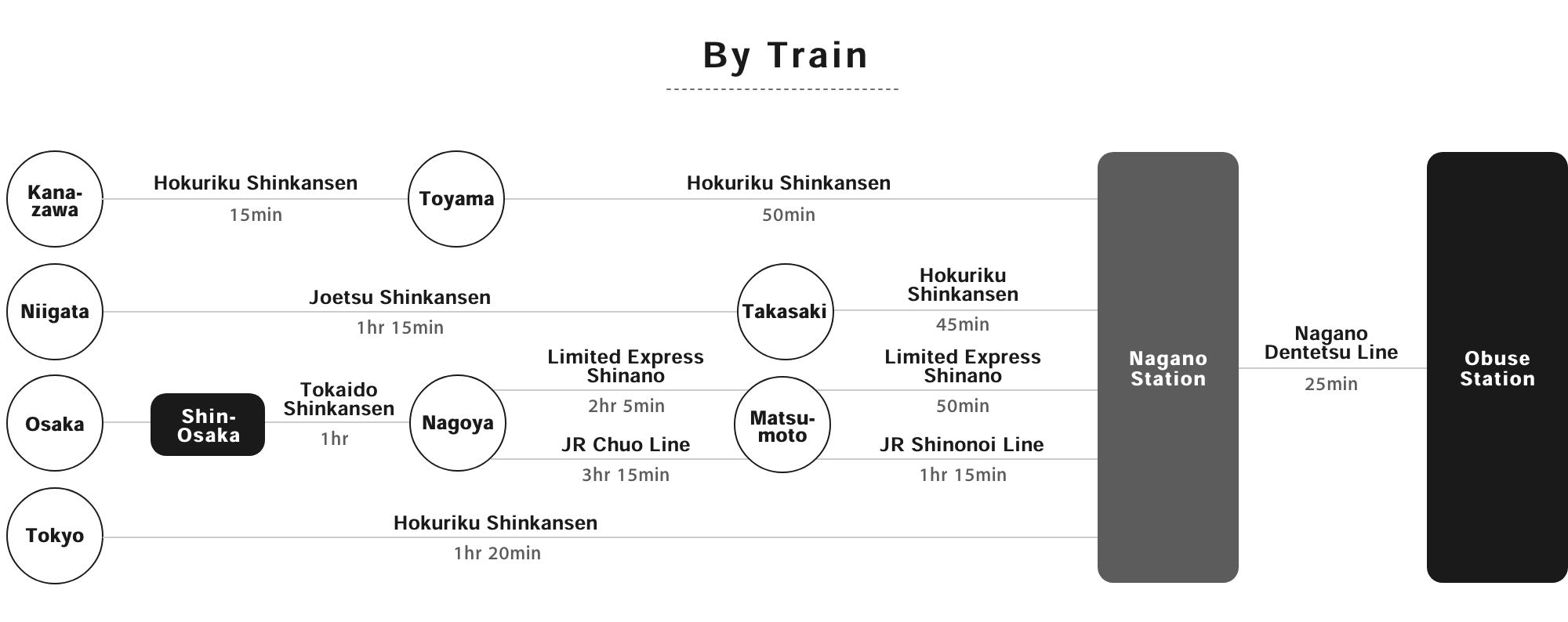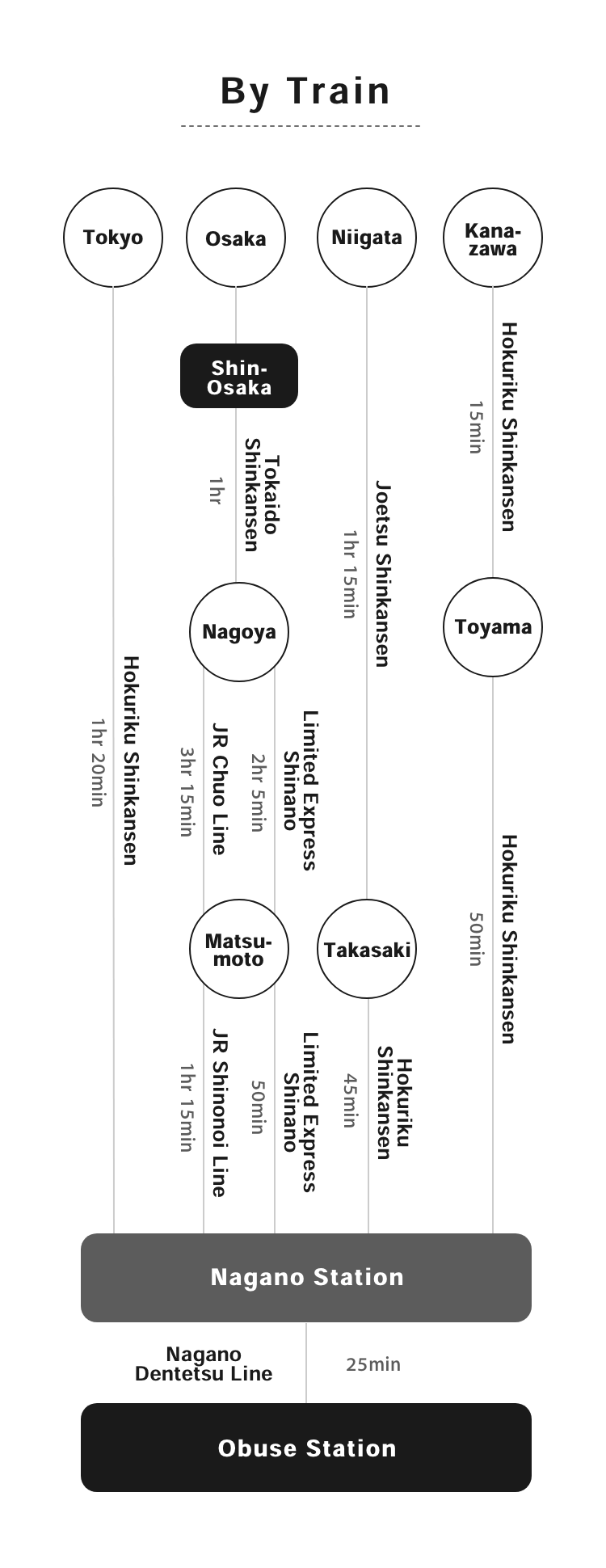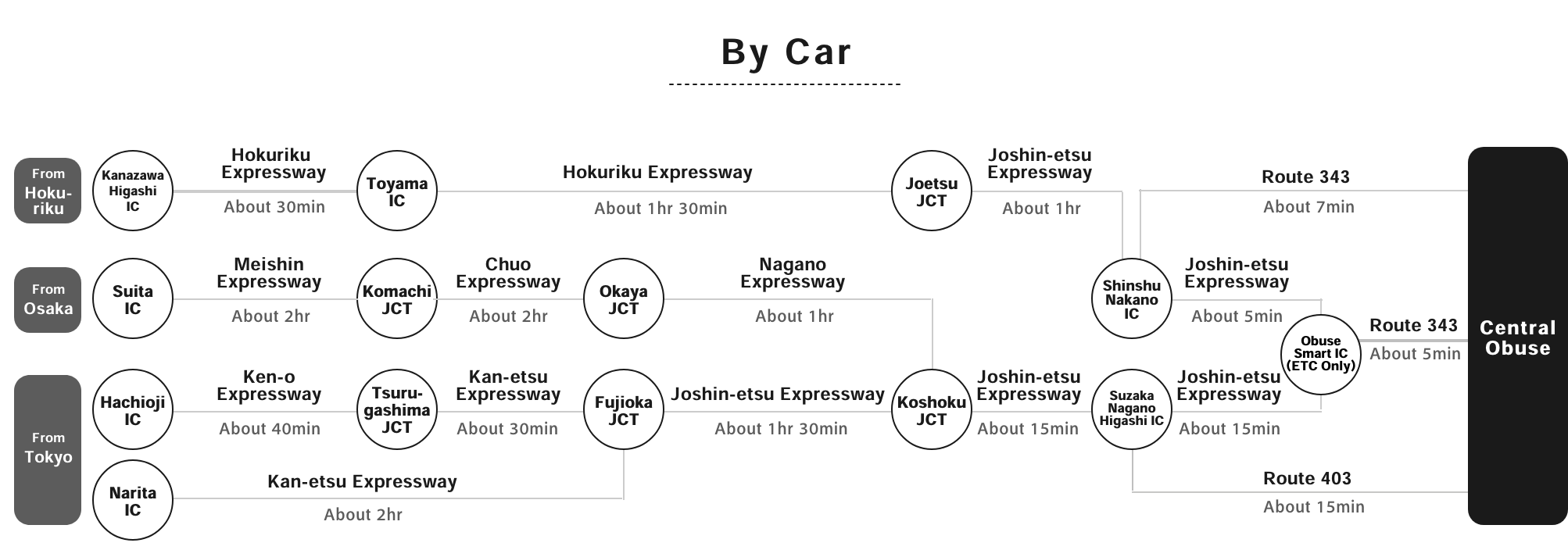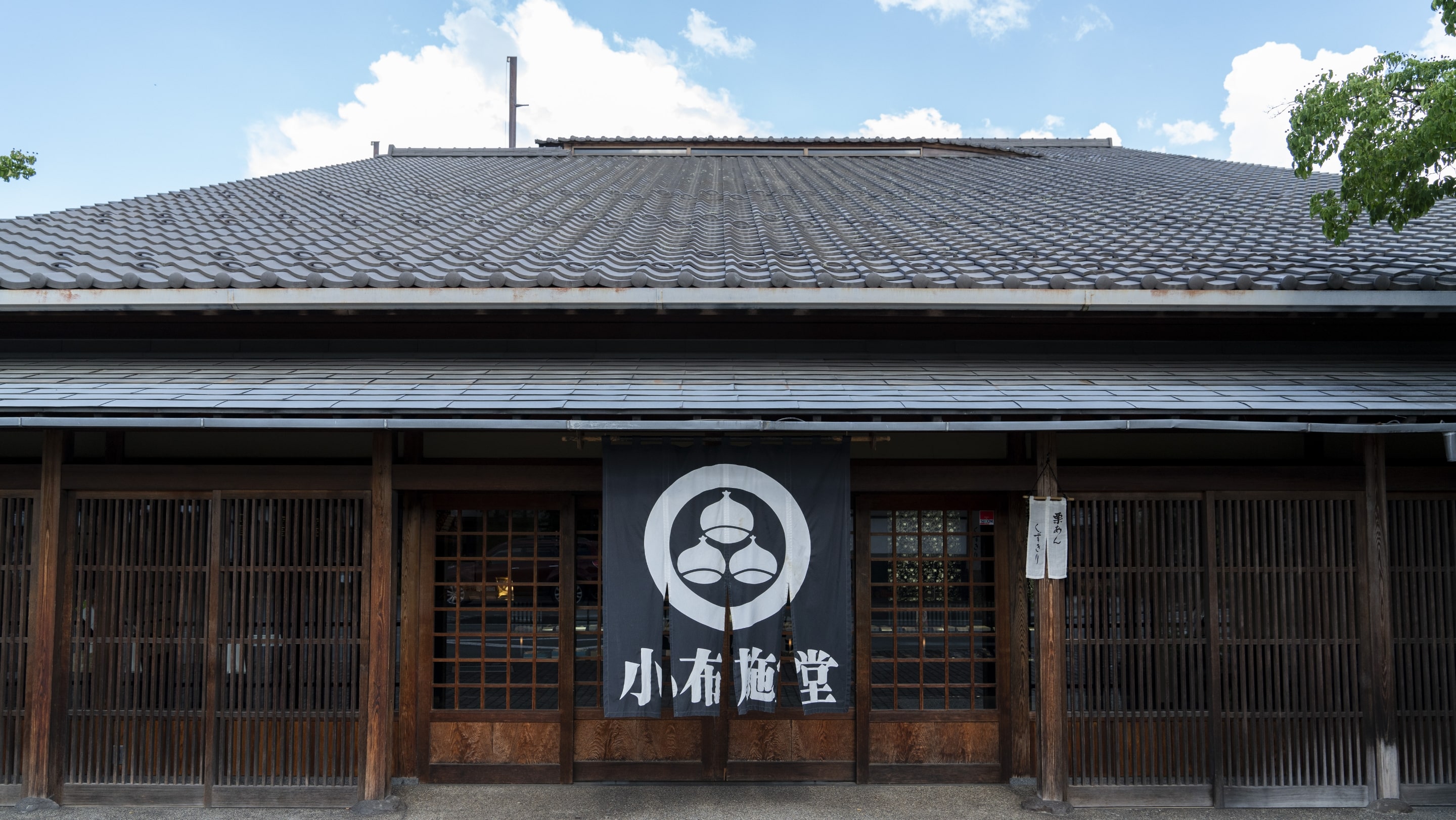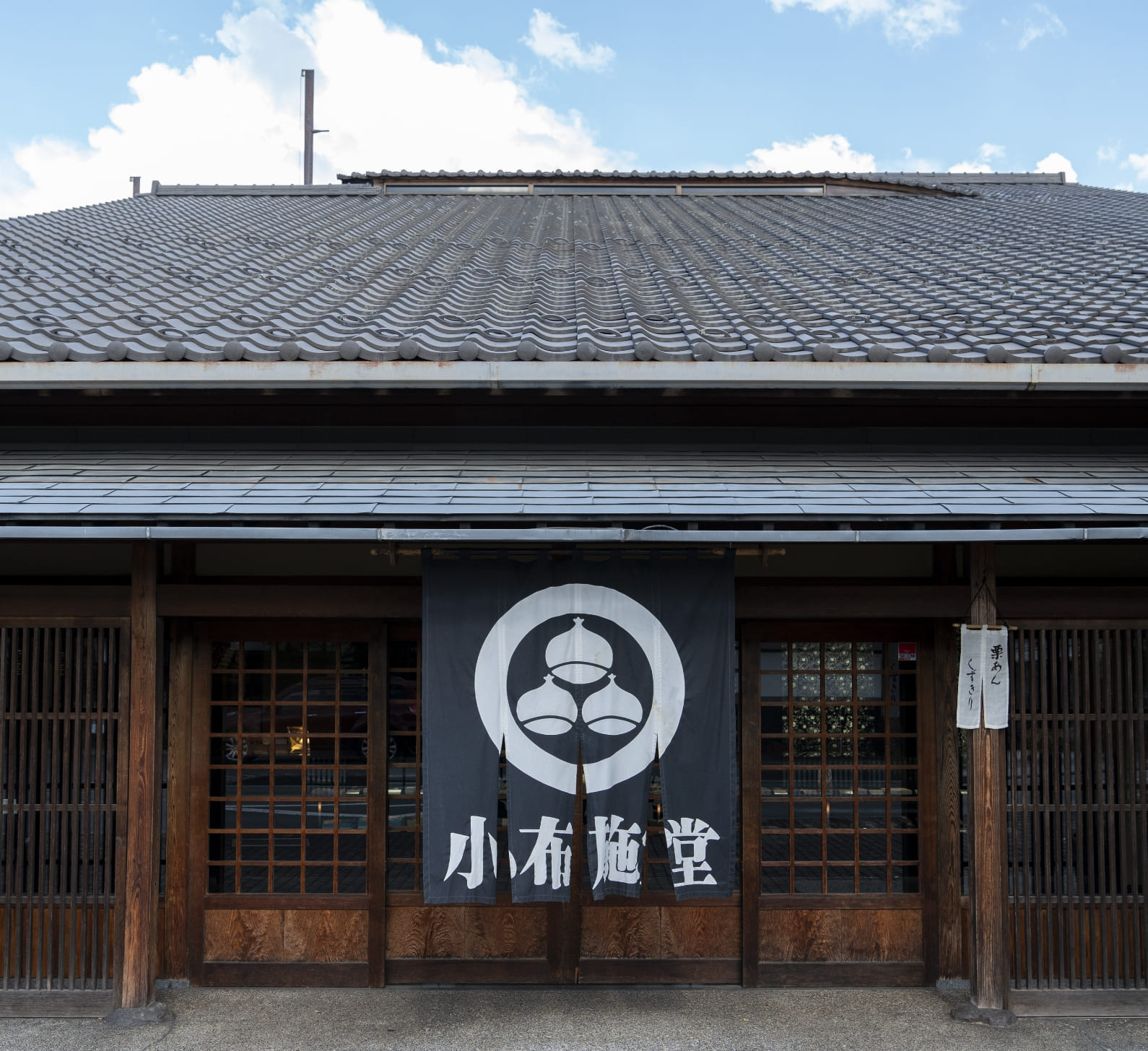Chestnuts have been cultivated in Obuse—long celebrated as one of the three top spots for chestnuts in Japan—since the fourteenth century and were presented to the shogunate as tribute during the Edo Period. It was only during the early twentieth century, though, that canning technology transformed chestnut sweets from a seasonal delicacy to a year-round product. With a history dating back to 1923, Obusedo produces a wide range of traditional chestnut sweets (like yokan, kuri kanoko, and rakugan) as well as dorayaki, pound cakes, and other delights.
Hours: 09:00−17:00
A picturesque agricultural town in the northern part of Nagano Prefecture, Obuse is located about 15km northeast of Nagano City’s famous Zenkoji temple and about 20km southwest of Yamanouchi Town’s Snow Monkey Park.
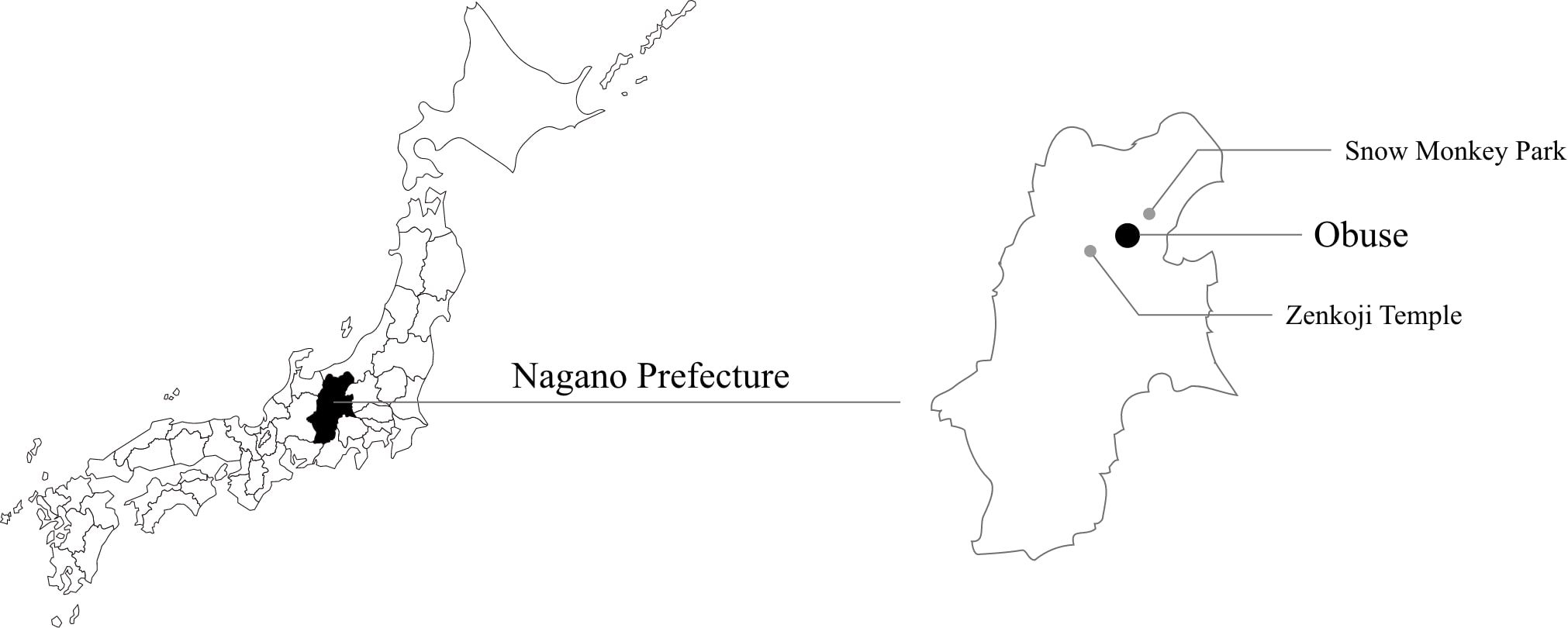
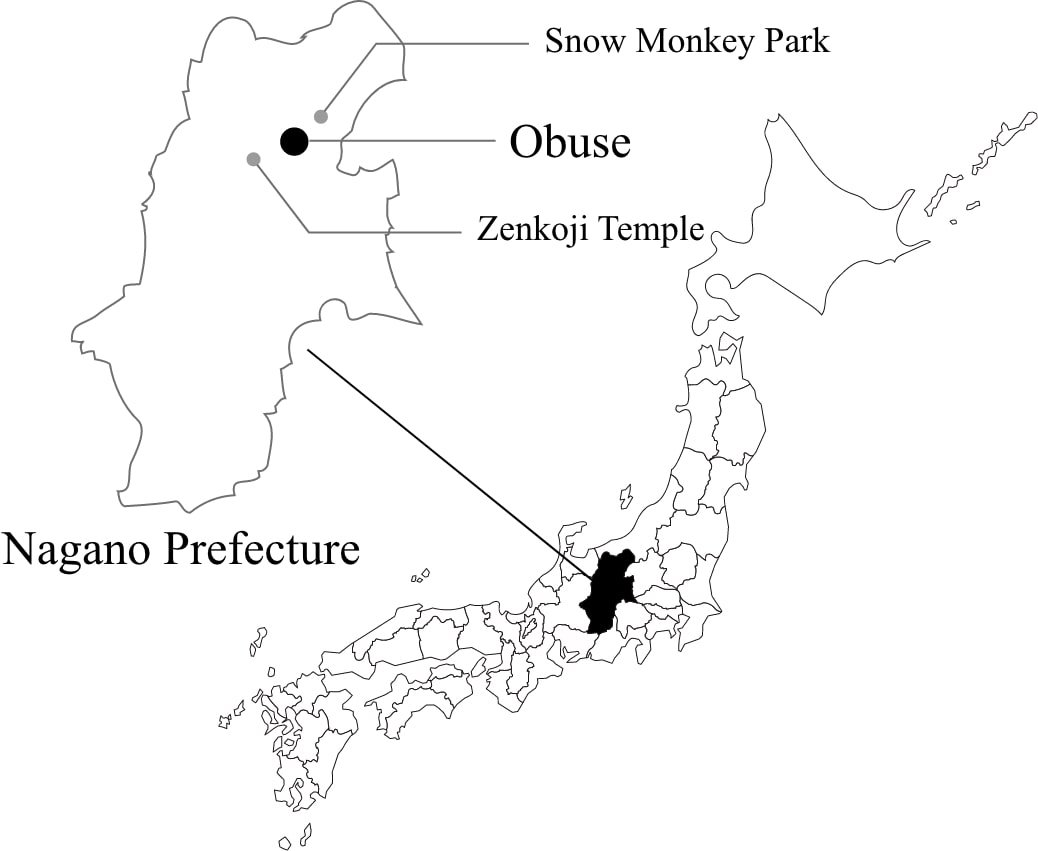
During the Edo Period (1603–1868), Obuse was a crossroads for regional trade with a flourishing market. The Ichimura family were prominent farmer-merchants whose business interests stretched from their estate at the center of town to Edo, Kyoto, and throughout Japan.
The 12th head of the family, Ichimura Ken (also known as Takai Kozan), was both a student and a patron of Katsushika Hokusai, the world-renowned artist best known for woodblock prints like “The Great Wave” from his series Thirty-Six Views of Mount Fuji. Kozan welcomed Hokusai to Obuse in the 1840s and commissioned him to produce paintings and other works.
The legacy of the Ichimura family, and of Kozan’s encounter with Hokusai, is the beating heart of tourism in Obuse today. This page introduces the primary family businesses—the Obusedo chestnut confectionery and the Masuichi-Ichimura Sake Brewery—and other nearby sites that reflect this heritage.
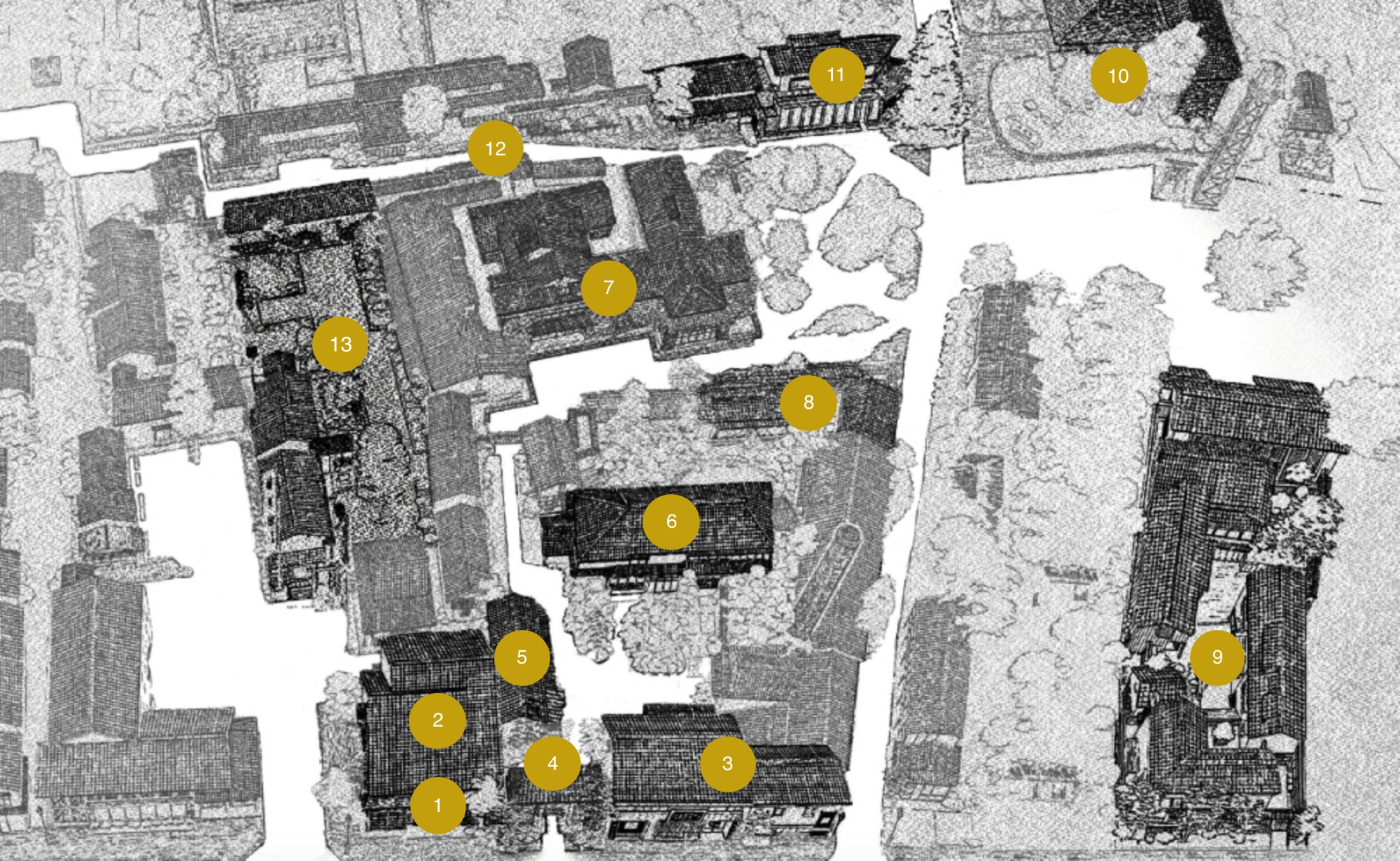

- 1Obusedo Honten Shop
- 2Obusedo Honten Restaurant
- 3Masuichi-Ichimura Sake Brewery
- 4Main Gate
- 5Entotsu Café
- 6Main Residence
- 7Obusedo Factory
- 8The Club Restaurant
- 9Masuichi Kyakuden Hotel
- 10The Hokusai-kan Museum
- 11San Poo Loh
- 12Kuri no Komichi
- 13Takai Kozan Museum
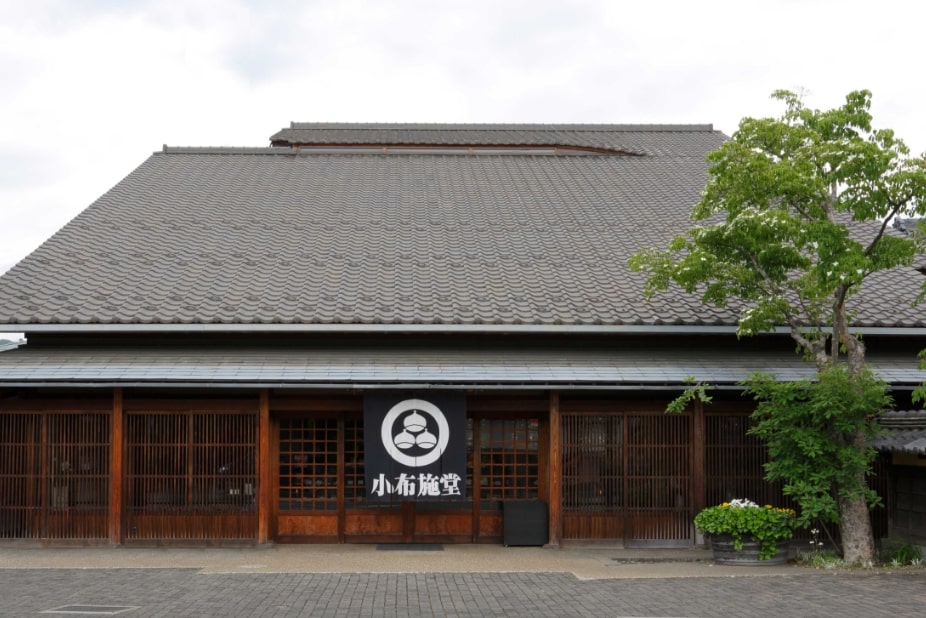
Back to area map
1Obusedo Honten Shop

Back to area map
2Obusedo Honten Restaurant
Located within the Honten shop, the restaurant offers an exquisite Japanese-style course lunch of seasonal local ingredients that changes monthly. The café menu features seasonal Japanese sweets made with chestnut paste year-round, chestnut shaved ice in the summer, and sweet chestnut soup with mochi in the winter.
Lunch: 11:00−15:00
Café: 10:00−16:00
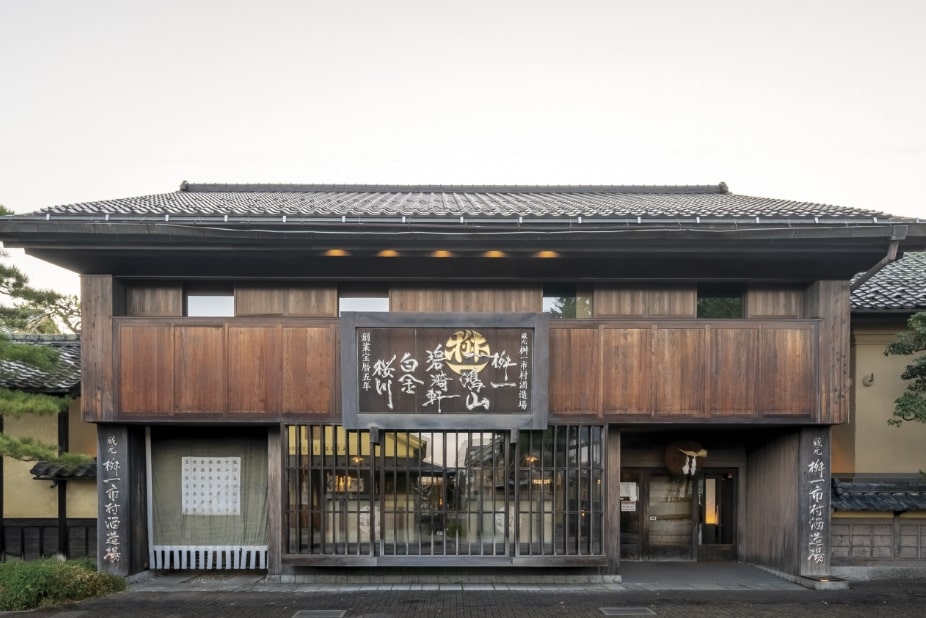
Back to area map
3Masuichi-Ichimura Sake Brewery
Founded in 1755, the brewery is the oldest of the Ichimura family businesses. Beginning in the 1990s, the company developed an outstanding lineup of distinctive premium sakes, some completely new and some that revive the brewery’s historic brands. All are only available direct from the brewery and its online shop and can be sampled at the atmospheric on-site tasting bar.
Hours: 09:30−17:00
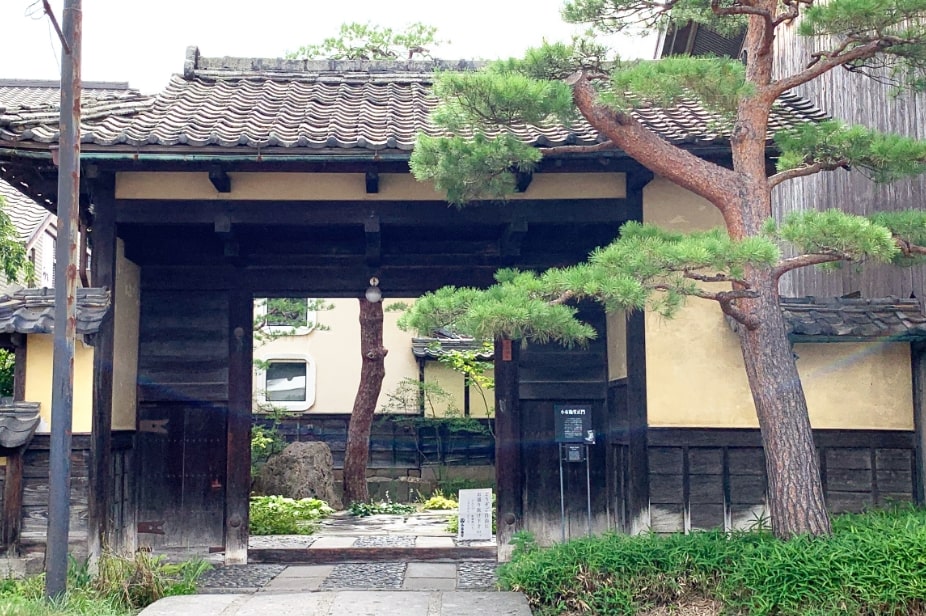
Back to area map
4Main Gate
The main gate of the Ichimura estate appears on maps as far back as the 1750s. Although the family were merchants, the gate reflects the style of a samurai residence. Kozan’s grandfather was given the right to use the last name Takai (the name of the surrounding district at the time) and to wear swords due to his service to the community during a famine in the 1780s. A survivor of the great fire of 1878, the gate is the same one that Hokusai passed through in the 1840s.
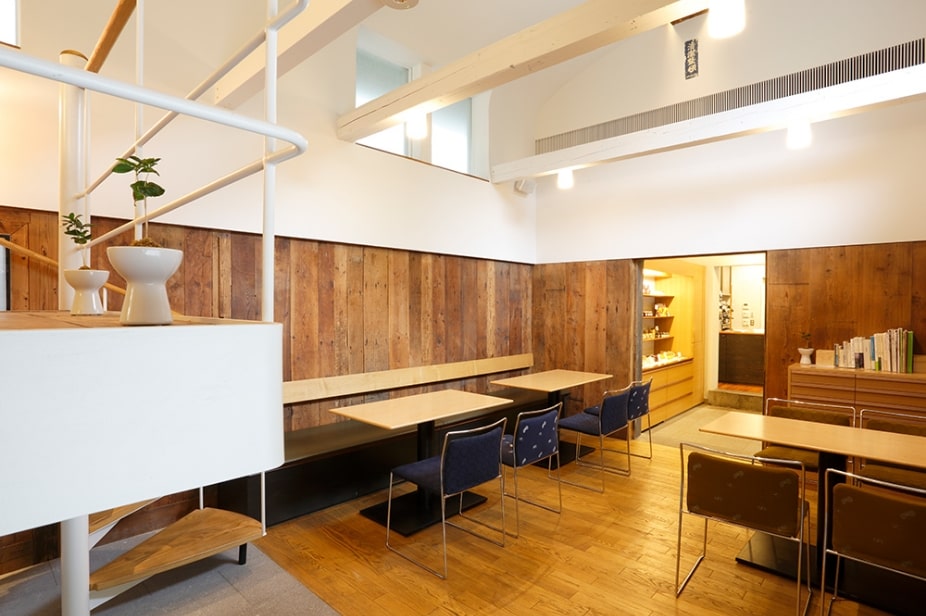
Back to area map

Back to area map
6Main Residence
Built in the mid-Meiji Period , the main residence is open to the public for one month each year between mid-September and mid-October during the chestnut harvest as a special venue serving Kuri no Tenshin Suzaku, a made-to-order mountain of unsweetened steamed chestnut lavished over sweetened chestnut paste. Reservations are required and can be made starting around August.

Back to area map
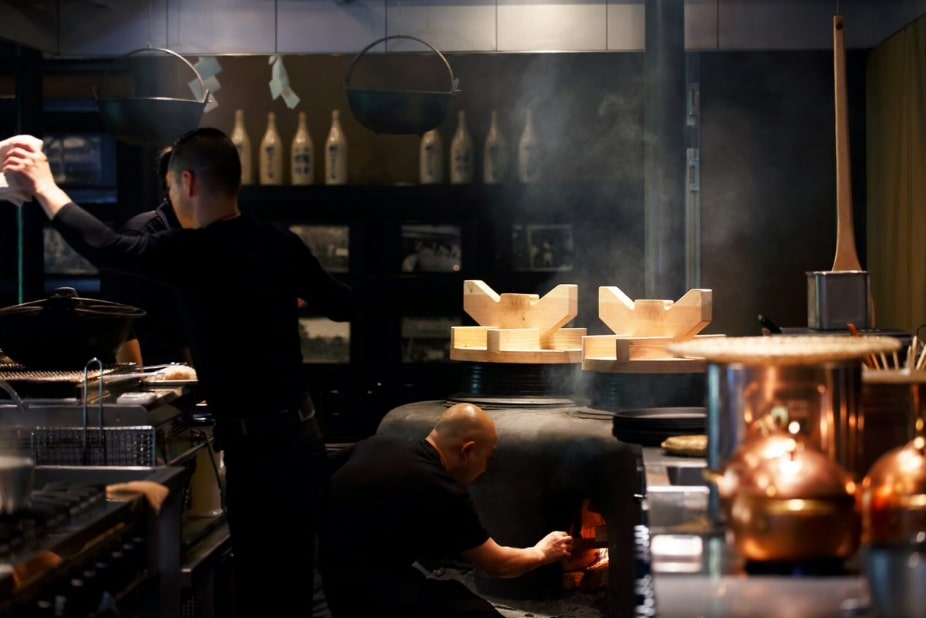
Back to area map
8The Club Restaurant
Opened in 1997 in a remodeled section of the Masuichi-Ichimura sake brewery, The Club offers a varied lunch and dinner menu of simple fare that, exquisitely prepared in the atmospheric open kitchen, highlights the flavor of ingredients such as iwana and yamame brook trout, regional meats, and local vegetables. Serves a full line-up of Masuichi sake.
Hours: 11:00–22:00 (last order 20:00)
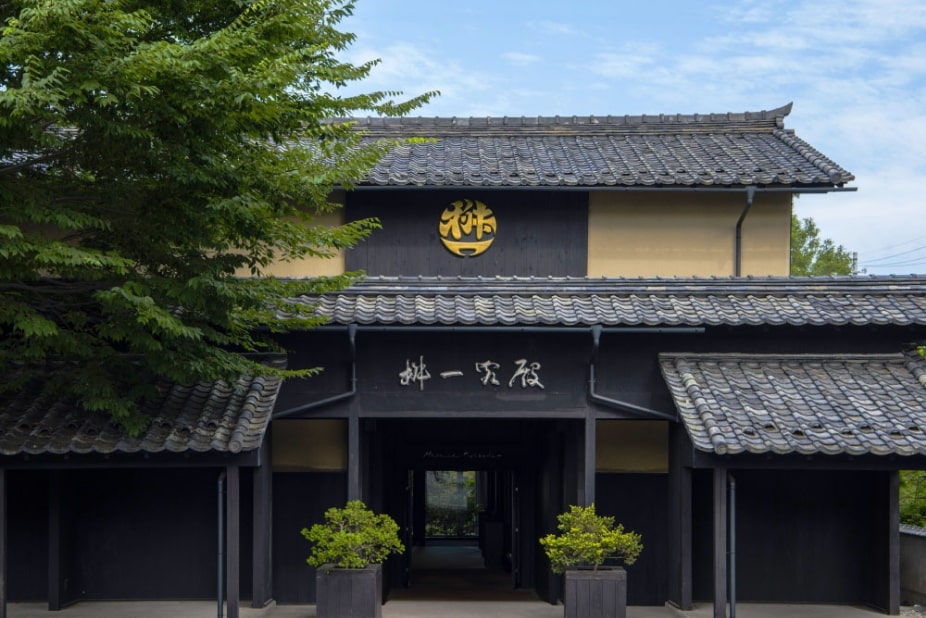
Back to area map
9Masuichi Kyakuden Hotel
Opened in 2007 on the site of the Ichimura family’s former soy sauce brewery, this sumptuous hotel repurposes Edo Period earthen storehouses and pre-war warehouses relocated from a sugar wholesaler in Nagano City. Its twelve guest rooms in three styles offer a luxurious environment whether traveling for business or pleasure.
Check-in: 15:00
Check-out: 12:00
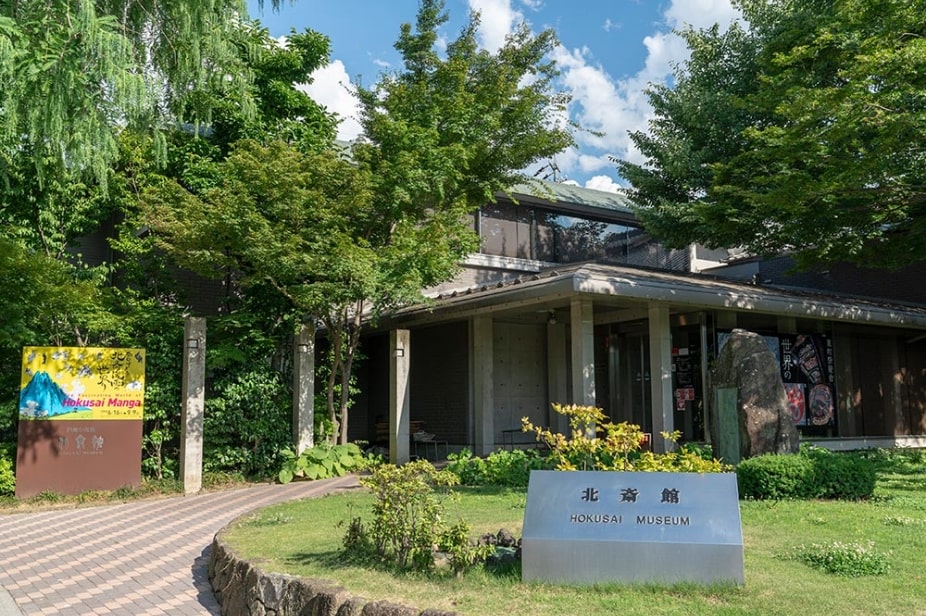
Back to area map
10The Hokusai-kan Museum
Opened in 1976, the museum collects, preserves, and exhibits work by Hokusai, with a focus on the paintings he produced while in Obuse. Highlights of the collection include two festival carts with painted ceiling panels, but the museum’s collection covers the full range of genres and styles in which Hokusai worked over his long career. Five themed exhibitions are held each year, so there is always something new to see.
Hours: 09:00–17:00
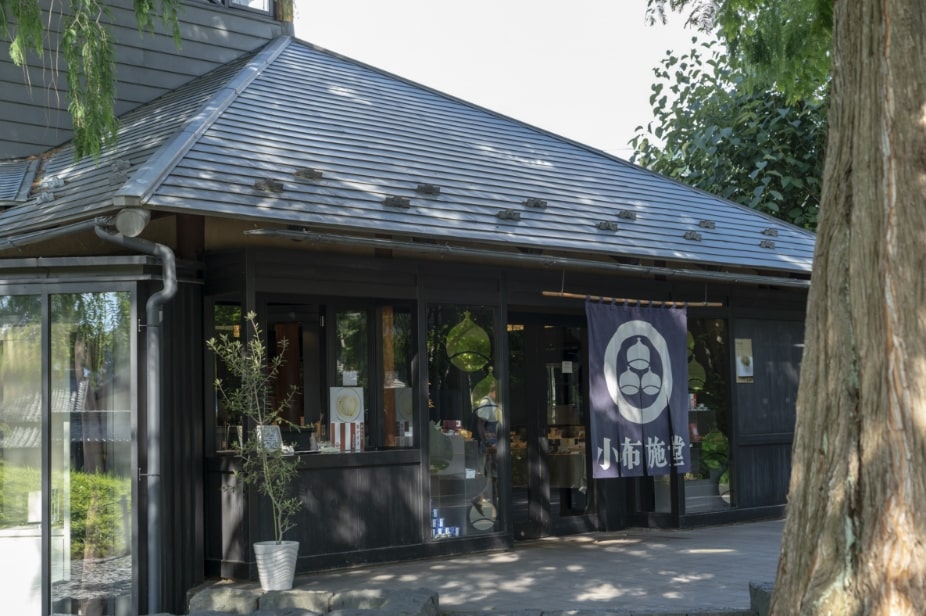
Back to area map
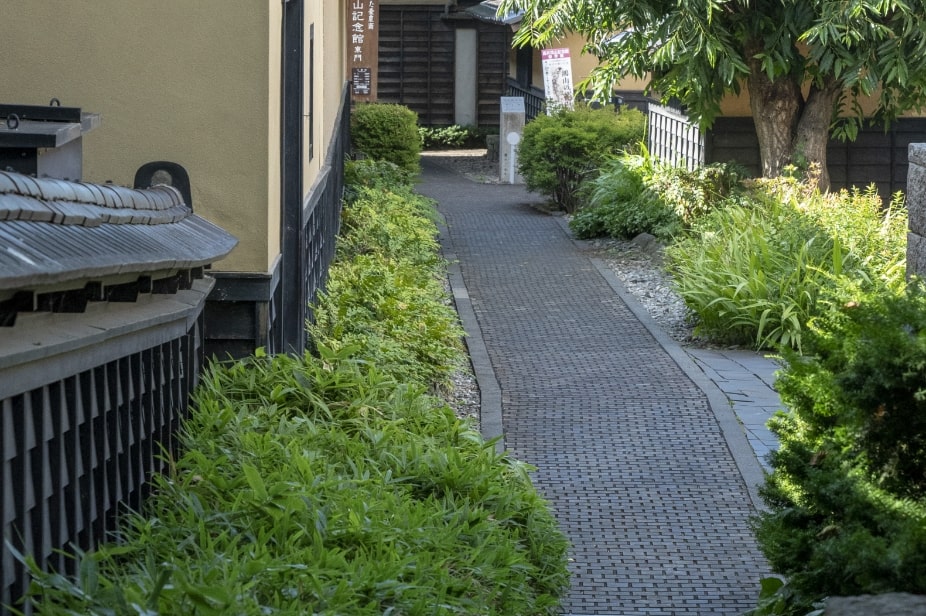
Back to area map
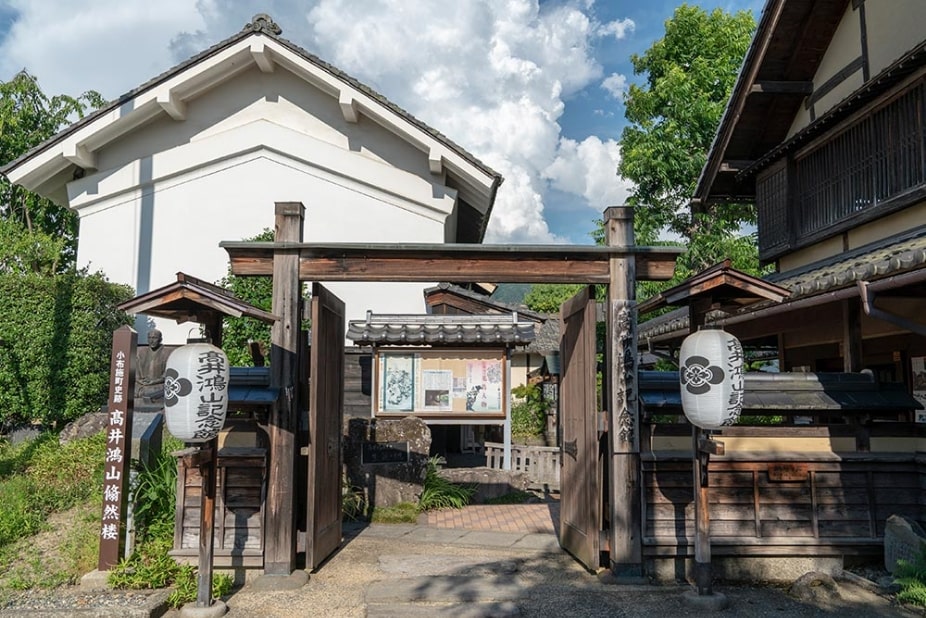
Back to area map
13Takai Kozan Museum
Operated by the Obuse Board of Education, the museum repurposes a section of the old Ichimura estate centered on Yuzenro, the private study used by Takai Kozan (Ichimura Ken, 12th head of the Ichimura family) to welcome numerous artists and leading thinkers of the late Edo period. Exhibits relate to Kozan’s work as a calligrapher and painter. His fanciful paintings of supernatural yokai are particularly entertaining.
Hours: 09:00–17:00 (18:00 in July and August)
